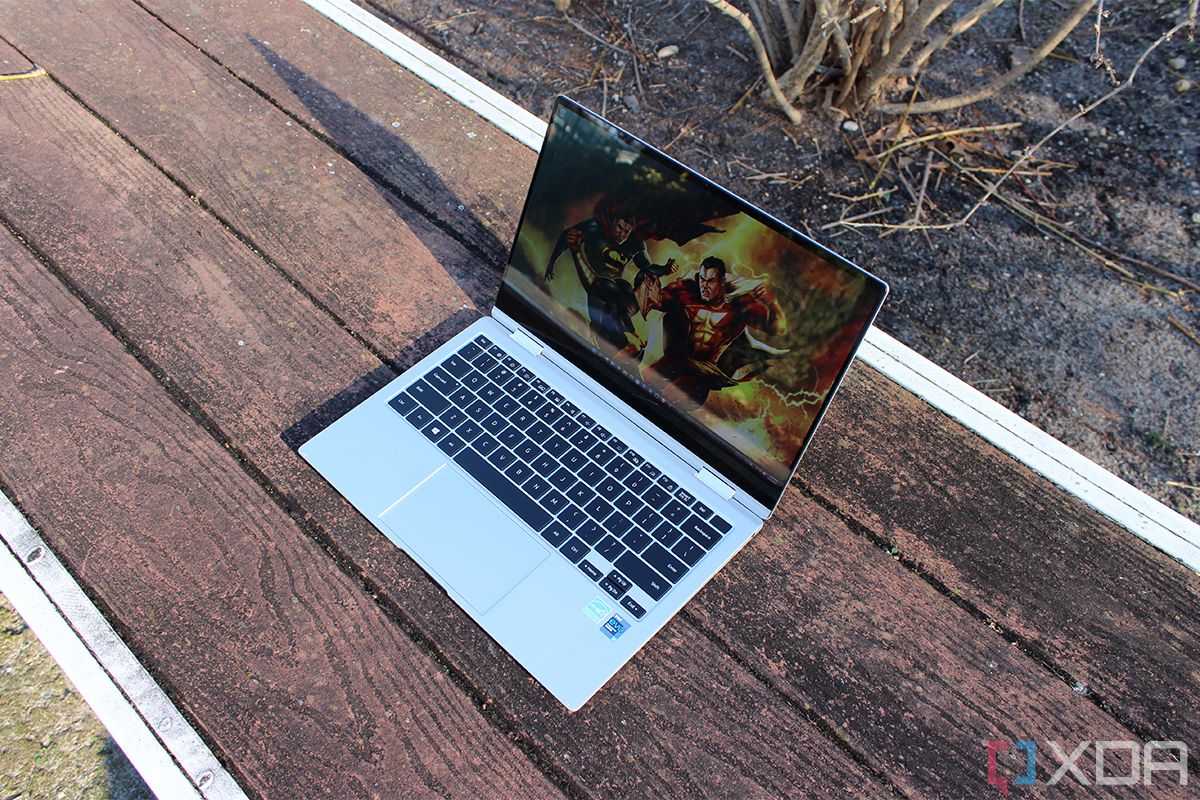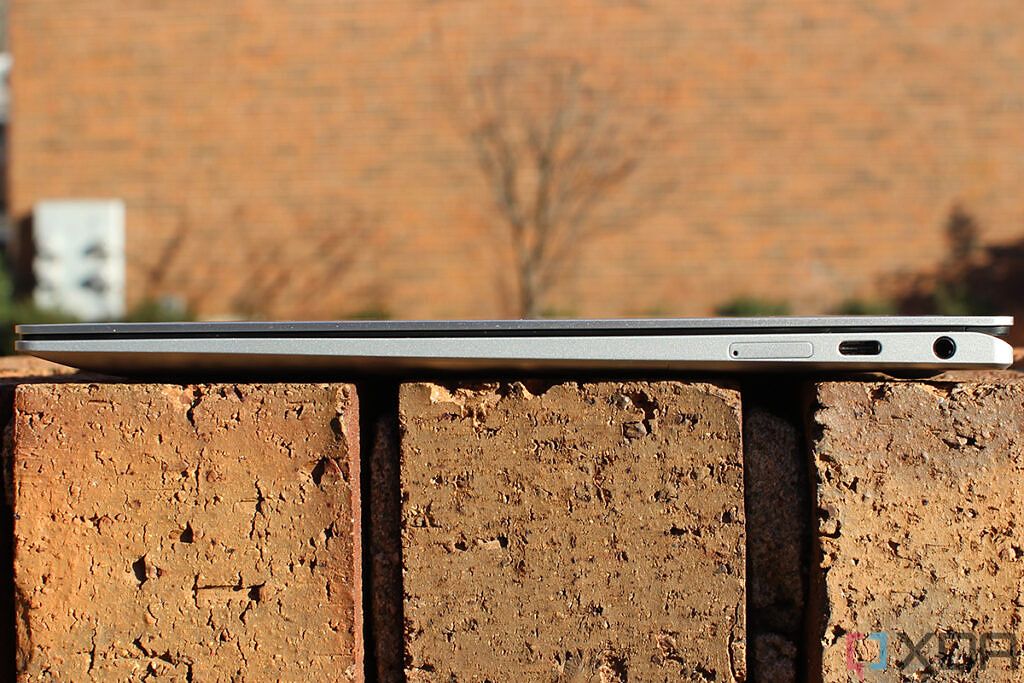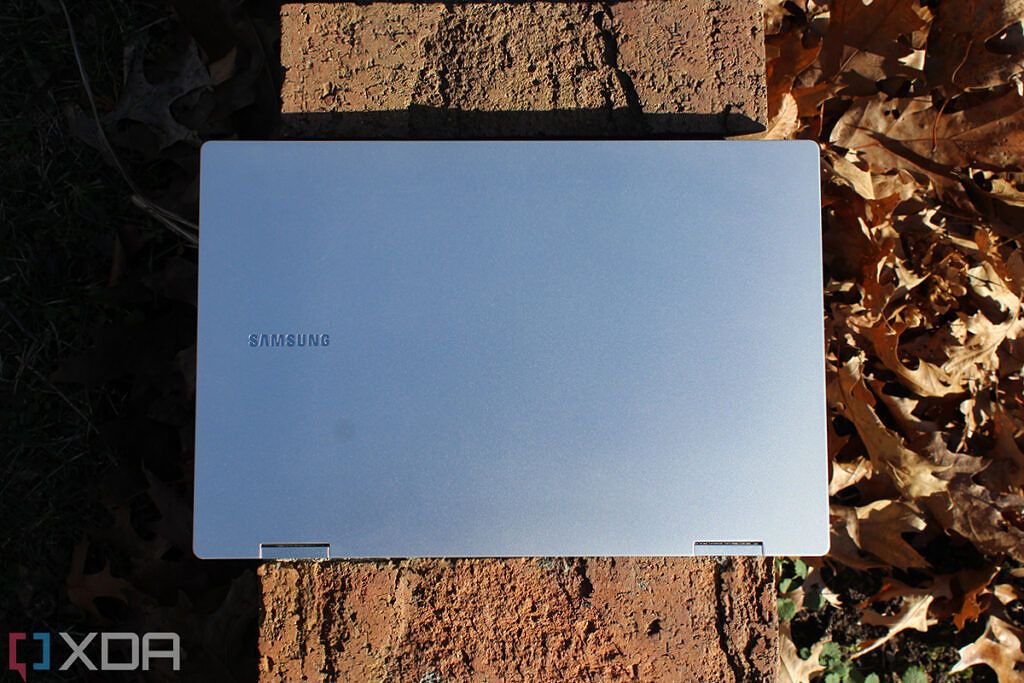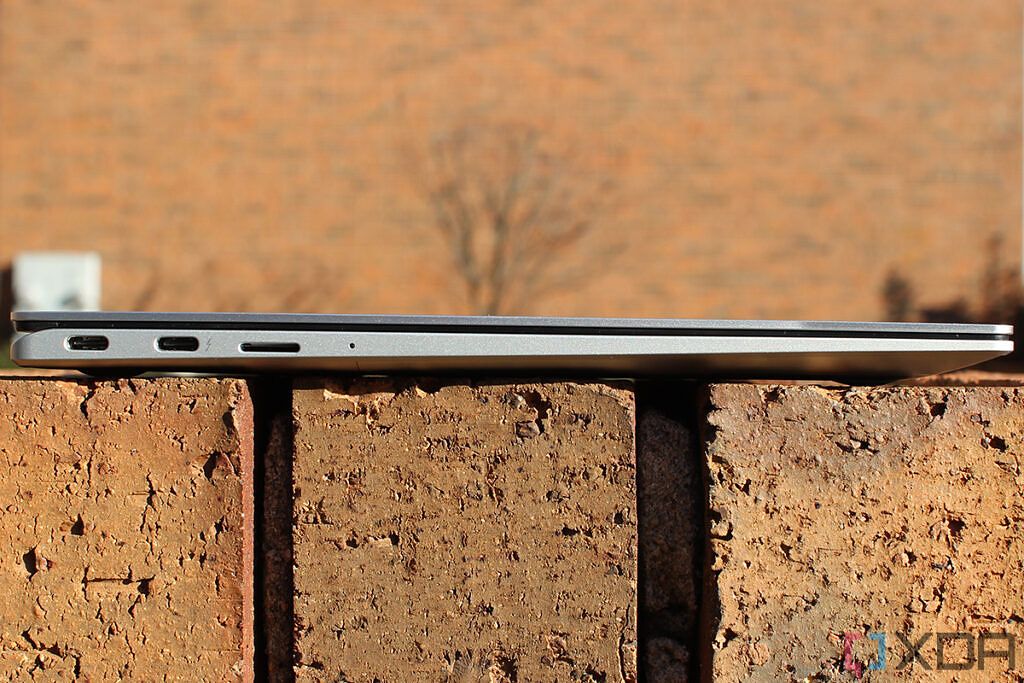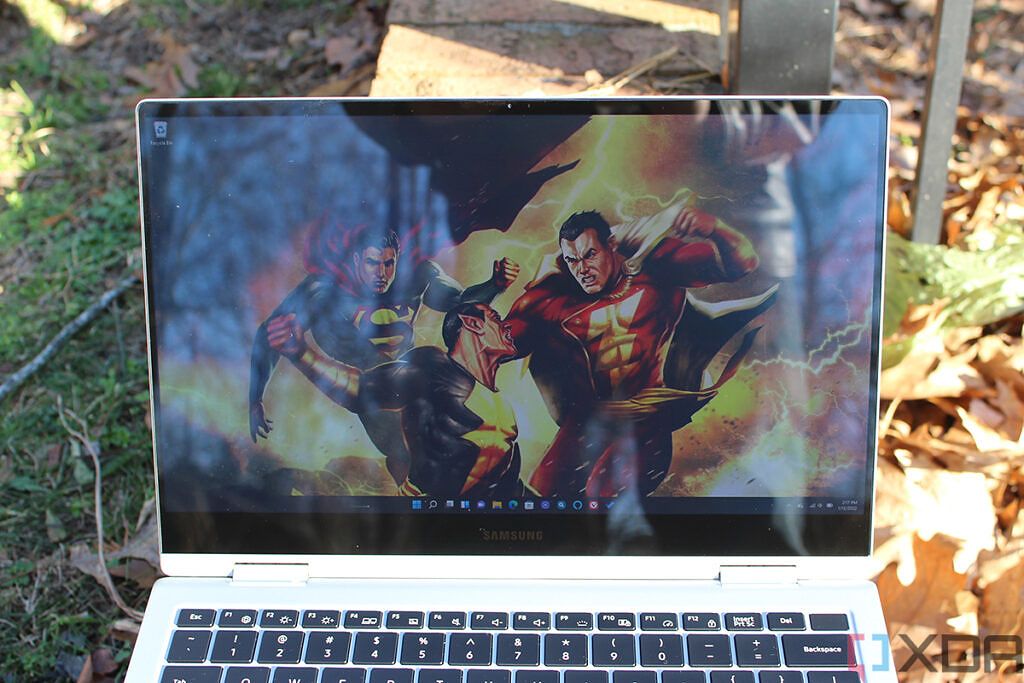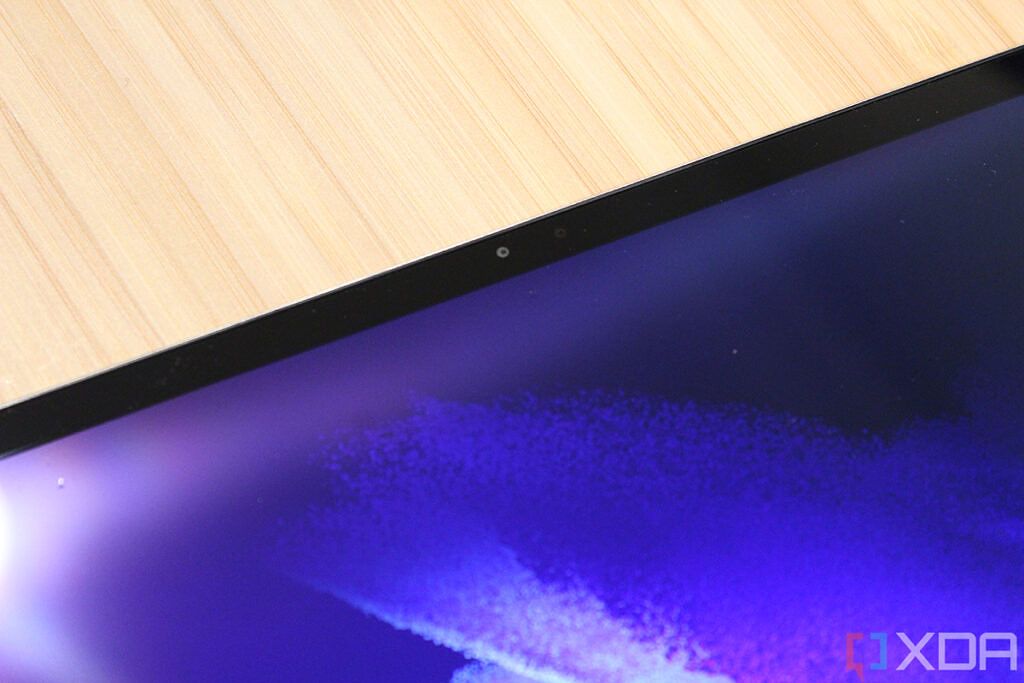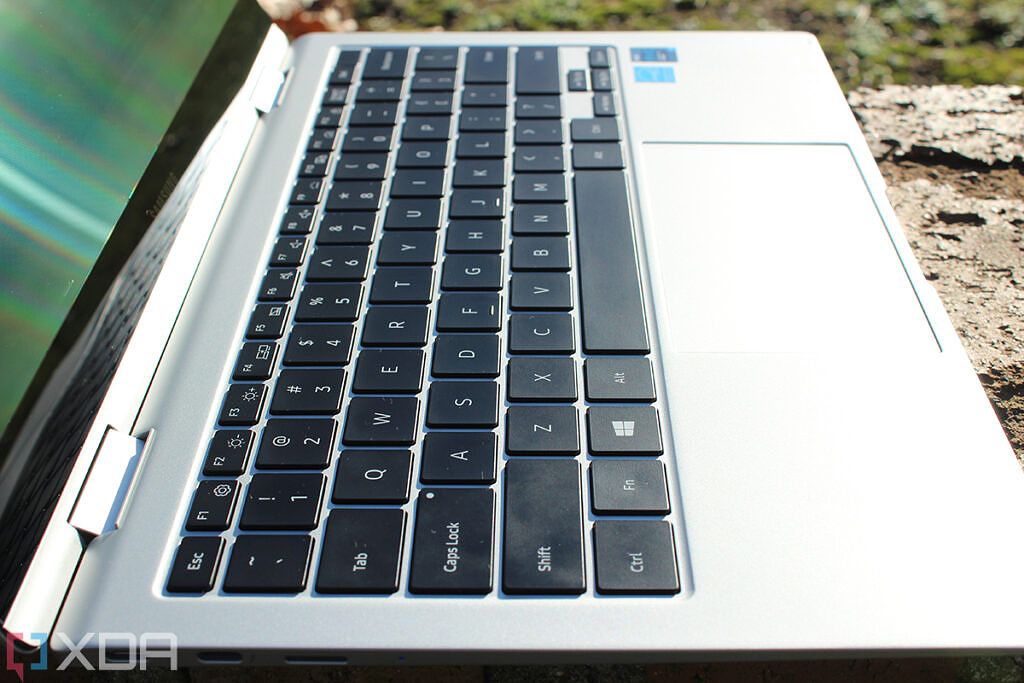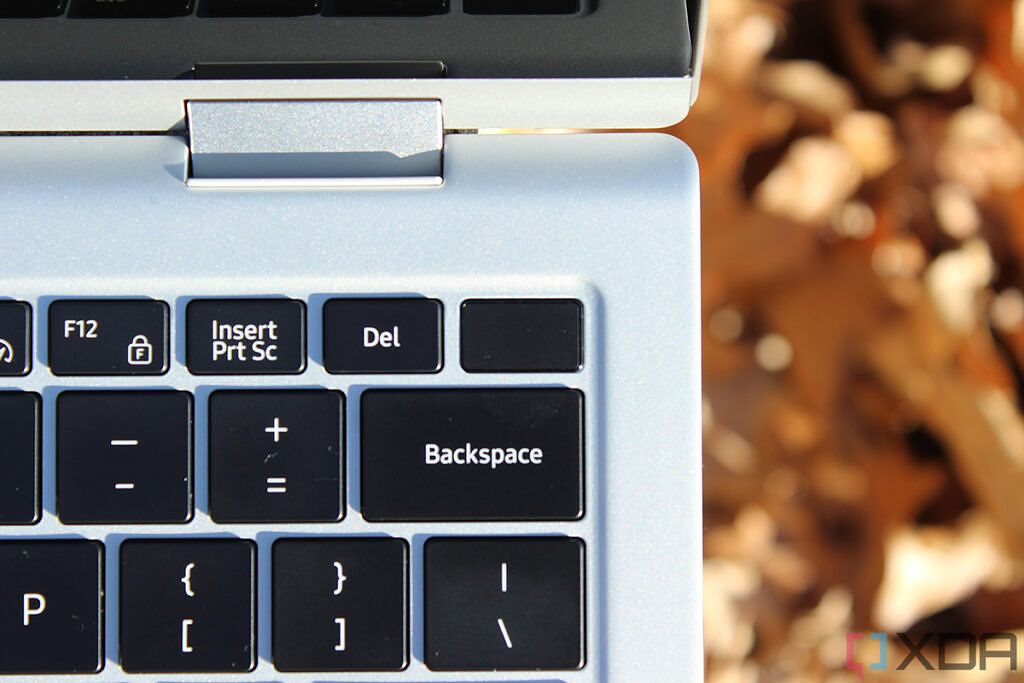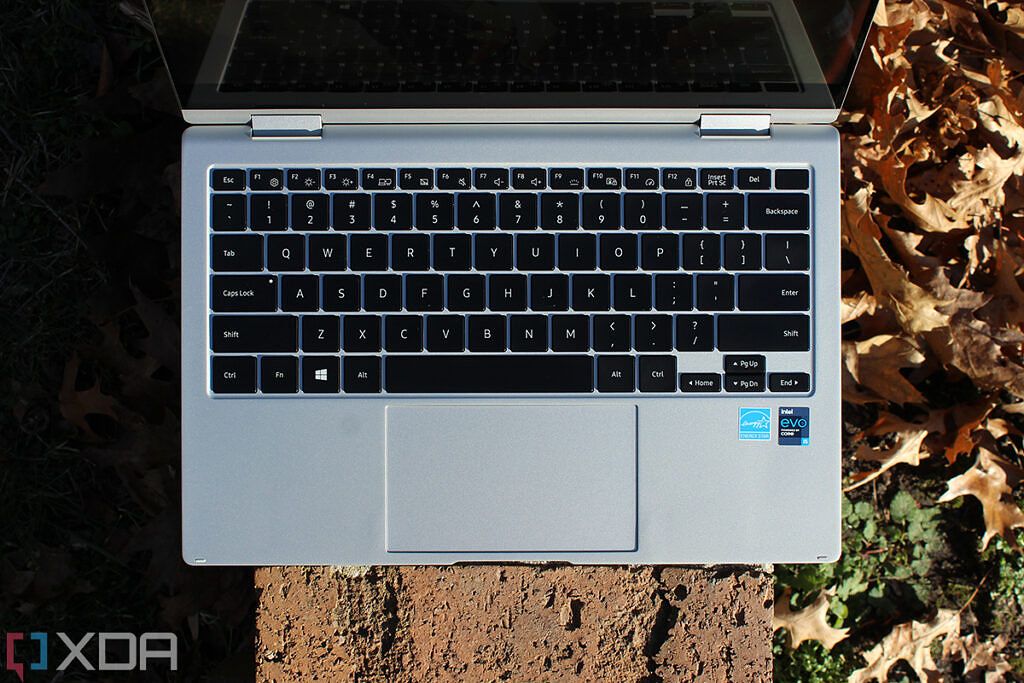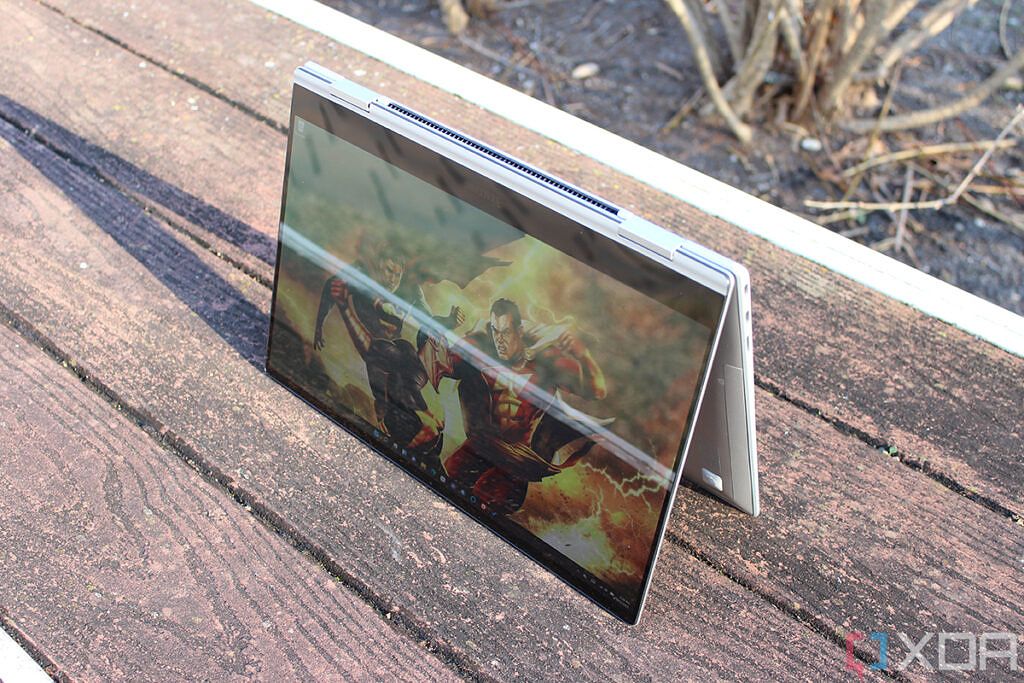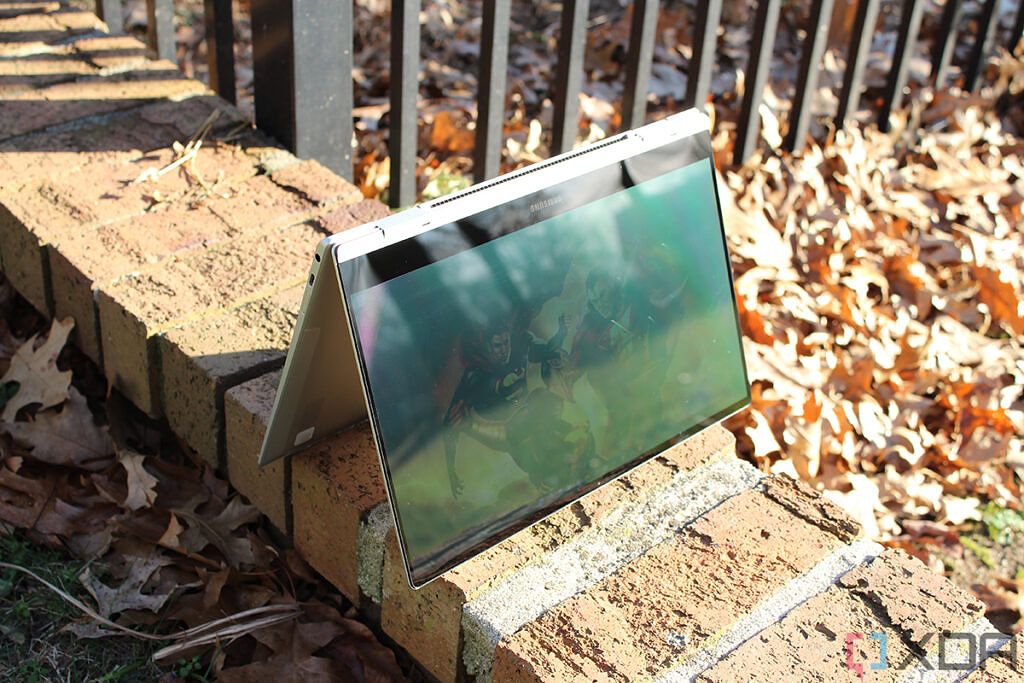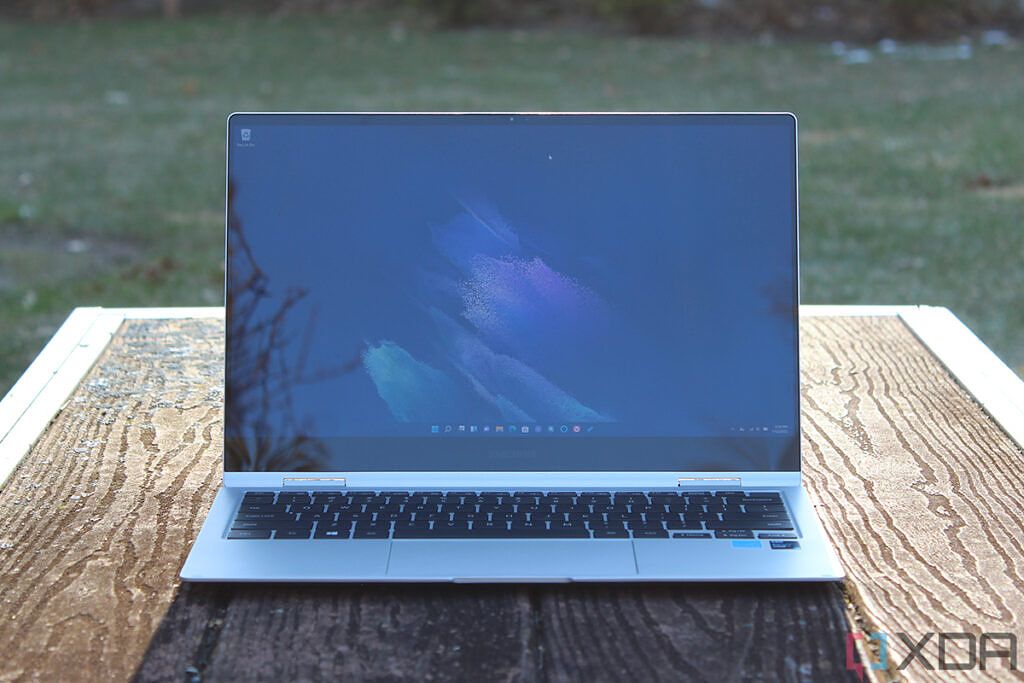I'm just going to come right out and say it. I love the Samsung Galaxy Book 360 5G. My fingers are dragging with each keystroke, because with every character written, I'm just a little closer to sending this stunning little 5G laptop back to Samsung, and it breaks my heart.
It's crazy thin at 11.5mm, and it weighs in at under two and a half pounds. The 13.3-inch screen is Super AMOLED, so it's beautiful to look at, and of course, it comes with 5G connectivity, all for $1,399.99. What's not to love?
About this review: Samsung sent us the Galaxy Book Pro 360 5G for review. The company did not have any input on the content of this review.
Navigate this review:
- Design: The Samsung Galaxy Book Pro 360 5G is crazy thin and light
- Display: It has a beautiful FHD OLED display
- Keyboard and touchpad: The keys are shallow, as you'd expect from something so thin
- Performance: The Samsung Galaxy Book Pro 360 5G uses Intel 11th-gen UP4 processors
- 5G: Is it worth it in the Samsung Galaxy Book Pro 360?
- Conclusion: Should you buy the Samsung Galaxy Book Pro 360 5G?
Design: The Samsung Galaxy Book Pro 360 5G is crazy thin and light
The first thing you'll notice when looking at the Samsung Galaxy Book Pro 360 5G is that it's super thin at 11.5mm. This is a very compact device. However, unlike with the Galaxy Book S, this has an Intel processor, so it does have a fan.
The Galaxy Book Pro 360 is so light, you'll forget it's in your bag.
This is the type of laptop that you'll throw in a backpack, and you'll have to double-check on your way out the door because it's so light that it feels like it's not in there. It's phenomenal, and it's just perfect for taking on the go.
Being so thin and made out of magnesium, it does have issues with the feel of it. Aluminum laptops definitely feel more premium than this does, and if you press on the lid, it requires very little pressure for it to give way.
The color that this laptop comes in is called Mystic Silver, which is a typically Samsung way of saying...silver. The Samsung Galaxy Book Pro 360 does come in other colors, and frankly, I'd love to see them. Just like we see with smartphones, I love to see laptops in more colors than the generic old silver. Of course, there's a popular demand for silver laptops, just like black in the mobile world.
As you can see, it's stamped with a Samsung logo on the left side, which is traditional for the company's laptops. That's the only thing that stands out in the otherwise all-silver design.
This is indeed an Intel Evo laptop, so it does have Thunderbolt 4. There's only one Thunderbolt 4 port, out of the three USB Type-C ports. It's not the one you think it is either. If you guessed that the Thunderbolt port is the lone USB Type-C port on the right side, you're wrong. It's one of the two on the left side, the one that's closer to the front.
It does have the Thunderbolt logo to mark the port, and I'm not a big fan of when laptop makers do this. I will say, however, that it's not nearly as bad as when we get a mix of USB 2.0 and USB 3.2 ports, as that does happen as well. While I don't think users should have to be able to tell between a Thunderbolt port and a USB 3.2 port, I expect that anyone that actually needs that Thunderbolt port knows which one it is. Indeed, you don't go and spend tons of money on an external GPU enclosure and a graphics card without knowing what port it plugs into.
As you can guess, there's no USB Type-A, which is fine by me. I much prefer the thin and light form factor, which is frankly delightful. It's still got a 3.5mm audio jack, and there's even a microSD card slot. On the right side, there's a slot for a nano-SIM card.
Display: It has a beautiful FHD OLED display
The slim and light design isn't the only reason that the Samsung Galaxy Book Pro 360 5G is a delightful machine. The 13.3-inch FHD OLED display is a big part of it too. To be fair, this isn't the only laptop with an OLED screen. There are plenty of them, in fact. But for most, it's available as an expensive 4K OLED option. On the Galaxy Book Pro 360, OLED is standard.
The blacks on the Super AMOLED screen are so black, you can't see where the screen ends and the bezels begin
With an OLED display, everything looks a little bit prettier. Blacks are blacker and colors are more vibrant. In fact, you can try a little experiment. Shut the lights off so you're in a dark environment with your laptop, and then power down your laptop. While Windows 11 is on that black screen when powering down, take note of where the screen ends and the bezels begin. The less pronounced that is, the closer you are to true black. With a Super AMOLED screen like this one, you won't be able to see the bezel at all.
Of course, I ran my usual display tests as well, and unsurprisingly, it got amazing results. It supports 100% sRGB, 94% NTSC, 96% Adobe RGB, and 100% P3. These are excellent readings, which you'll find in very few other laptops at this price point. You might see it in an entry-level Dell XPS 13, but still, you won't get OLED for that cheap.
Contrast maxes out at 9,650:1, which is way more than you'll get from any standard IPS LCD. Brightness maxxed out at 282.8 nits, which is sadly a bit low. It makes it hard to use outdoors, particularly in direct sunlight.
One other thing to note about the screen is that it does support touch, although that should be a given since this is a convertible. It comes with an S Pen too.
The laptop has slim bezels on three sides, although it has a big chin thanks to the 16:9 display. The top bezel houses a 720p webcam, which is a shame. Starting next year, you'll see 1080p as more of a standard.
Keyboard and touchpad: The keys are shallow, as you'd expect from something so thin
I found the keyboard on the Samsung Galaxy Book Pro 360 5G to be quite enjoyable. However, it's probably not for everyone.
Indeed, these keys are quite shallow, something I've noticed on other Samsung thin and light laptops. Personally, I think that they require a comfortable amount of force to press, compensating for the lack of depth. It also seems very accurate, with very few accidents on this keyboard. I like it a lot.
It comes with a fingerprint sensor built into the power button. Interestingly, the button is actually flush with the keyboard deck, not that that makes a big difference to the user experience. There's no IR camera for facial recognition though, so it's nice to have the fingerprint sensor.
The Precision touchpad is fast and responsive, although it's relatively small when compared to some competitors. Honestly, there really just isn't a lot of space on the deck. Perhaps in a future generation of the product, we'll see a taller aspect ratio in the display, and that will lead to a larger touchpad. For now, this will do.
Performance: The Samsung Galaxy Book Pro 360 5G uses Intel 11th-gen UP4 processors
This is somewhat interesting, but the Samsung Galaxy Book Pro 360 5G uses Intel's 11th-gen UP4 processors. This is a variant of the U-series that comes in at 9W, and it's made for thin and light devices. In previous generations, it was known as Y-series.
Y-series has a bad reputation, and for good reason. On those old dual-core, 5W devices, I wouldn't even imagine opening something like Photoshop. Things have changed, and UP4 is actually quite good. I'm happy to say that it actually deserves the title of U-series, and it's not just some Intel marketing trick like when it rebranded its Core m5 and m7 to i5 and i7, thinking we wouldn't notice.
However - and this bit is important - according to Samsung's spec sheets, the Samsung Galaxy Book Pro 360 uses 15W UP3 processors. In other words, you're actually sacrificing performance a bit in favor of 5G connectivity. Personally, I think it's totally worth it and I'd pick the 5G model any day of the week. I edited all of my photos for this review, and a couple of others, on this laptop. At no point was I wishing that I had more power.
For benchmarks, I used PCMark 10, Geekbench, Cinebench, and 3DMark.
|
Samsung Galaxy Book Pro 360 5G Core i5-1130G7 |
Microsoft Surface Book 3 Core i7-1065G7, GTX 1650 |
Microsoft Surface Pro 7+ Core i5-1135G7 |
|
|---|---|---|---|
|
PCMark 10 |
3,815 |
3,805 |
3,963 |
|
Geekbench |
1,333 / 4,745 |
1,318 / 4,775 |
1,358 / 5,246 |
|
Cinebench |
1,269 / 3,403 |
1,167 / 3,555 |
1,235 / 2,854 |
|
3DMark: Time Spy |
1,115 |
3,191 |
As you can see, performance is pretty solid, holding its own with U-series laptops. It gets the job done. The only question is if you want 5G or a better CPU.
Battery life is a pretty flat five hours on average. I used it on balanced settings with the screen on medium brightness. There was very little variation in the results, but whatever variation there was was on the plus side.
5G: Is it worth it in the Samsung Galaxy Book Pro 360?
Cellular connectivity isn't an inexpensive addition to a laptop configuration. In fact, you can save $200 by getting a Wi-Fi only model with the same specs but a Core i7 instead of a Core i5. Still, I'm a big fan of any kind of cellular connectivity.
With the Samsung Galaxy Book Pro 360 5G, there's no asking for Wi-Fi passwords, ending up on mailing lists to use public Wi-Fi, or slow and congested hotel networks.
The benefit is that you can connect from anywhere. Combine that with the small form factor and light weight of this laptop, and it's a sure winner. You can take it anywhere you want to go. This one came with a Verizon SIM in it, and I had service everywhere. There was no asking for Wi-Fi passwords, signing up for a mailing list to use a public Wi-Fi network, or slow and congested hotel networks. I just open up the laptop, and I'm connected to the internet.
And in 2022, it's a wonder that we put up with anything else. It's how our phones work, so it's wild to me that while we use our phones all day, it's fine to people to jump through hoops to connect to the internet on a laptop.
That being said, it's worth noting that this laptop only supports sub-6GHz 5G, something that's true of all Intel-powered 5G laptops. That means that you won't get those multi-gigabit speeds of mmWave 5G networks, although it still hasn't been proven how useful that is. Millimeter waves don't work indoors because even something as thin as a window blocks them. If mmWave ever turns out to be useful, laptop makers will put in the effort to build the extra antennas needed. Until then, expect to see more sub-6 devices.
Conclusion: Should you buy the Samsung Galaxy Book Pro 360 5G?
As for whether or not you should buy the Samsung Galaxy Book Pro 360 5G, you can probably guess the answer. It's a hard yes. This is one of my favorite laptops that I've used in a long time. One suggestion would be to pay the extra $200 for the Core i7 model with 16GB RAM, as the extra memory can be useful.
Like any laptop, it's not perfect. It's still got a 720p webcam, which is probably its biggest downside. Also, the battery life isn't anything to write home about, although that can be forgiven given the form factor. It's also frustrating that there's no place to store the pen, making it easy to lose.
But let's talk about the good, because there's so much at a reasonable price of $1,399.99. Performance is great, and that comes in a slim and light form factor that's easy to carry around. You get 5G connectivity, and as I mentioned earlier, that has to be a thing that you really want. But my favorite is the beautiful OLED display. It's FHD, so it doesn't suck down battery life like a 4K screen would. It's so visually pleasing to use, so when you're working, it just feels good.
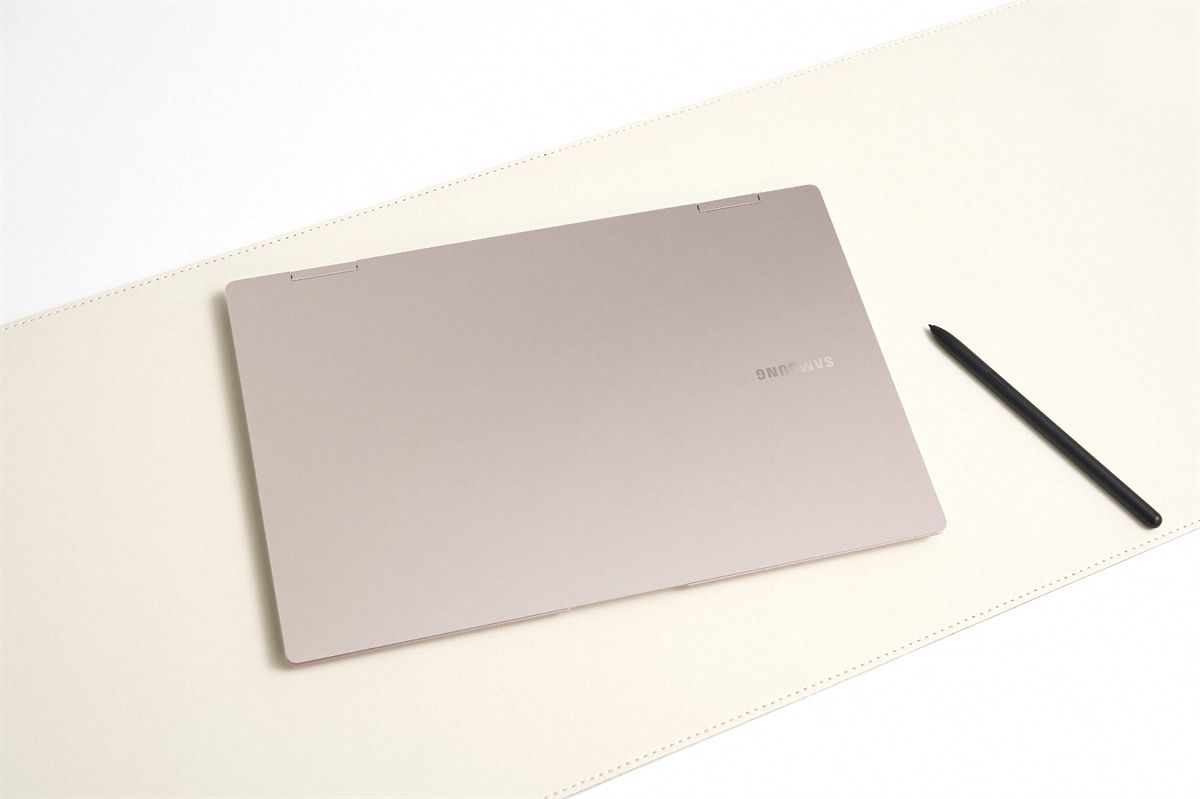
Samsung Galaxy Book Pro 360 5G
The Samsung Galaxy Book Pro 360 5G is the company's latest flagship laptop.

